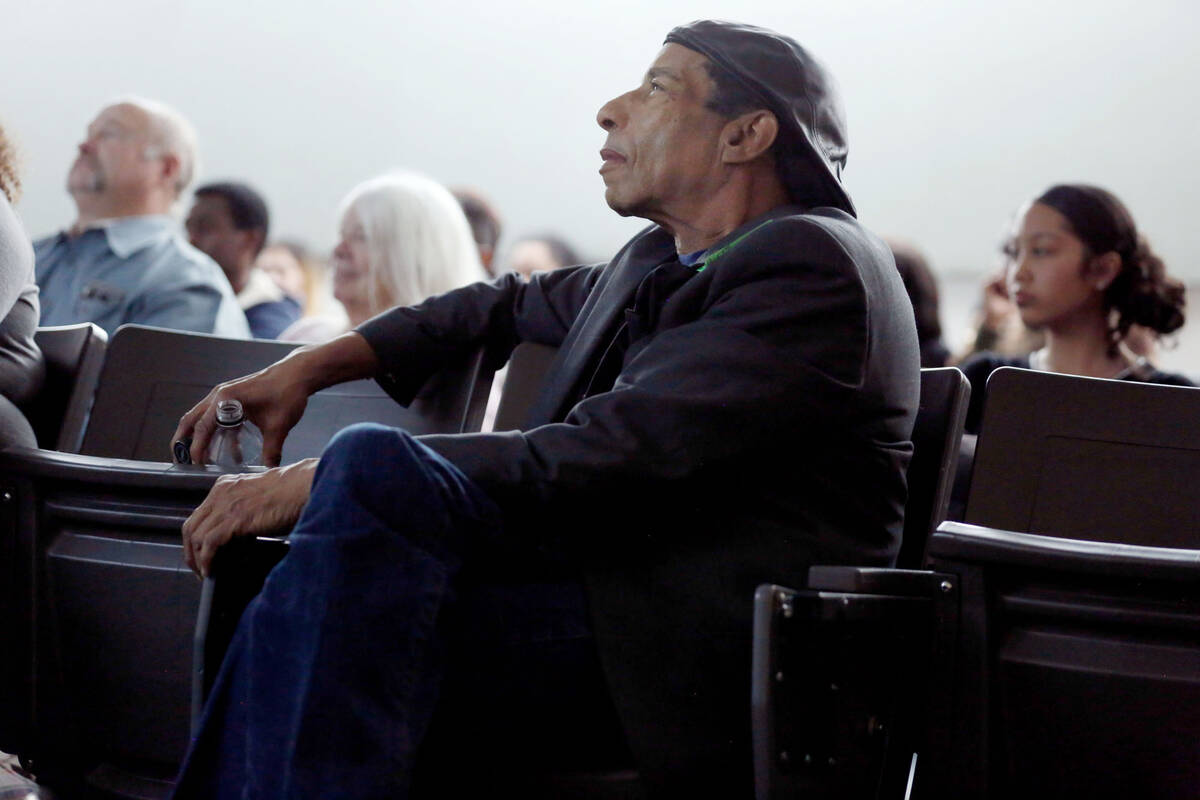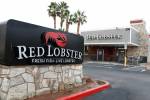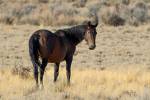Film community mourns prolific documentarian, former UNLV professor
Stan Armstrong, a Las Vegas filmmaker who strove to document a side of history that wasn’t widely known, died Sunday after battling a heart condition. He was 69.
Armstrong was as much a filmmaker as he was a chronicler who “thrived in documenting history,” sister Pamela Armstrong said. “History that was not represented in the history books.”
Armstrong’s father, Lloyd, fled an attempted lynching in the South and came West, where he became a self-taught butcher and one of the first Black business owners in the Historic Westside, a tight-knit but still segregated community at the time. Stan Armstrong, who became a documentarian, UNLV professor and staple in the film community, dreamed of putting untold, real Las Vegas stories in front of worldwide audiences.
“He felt my father never got the proper (recognition),” Pamela Armstrong added. “Stanley listened to our dad talk endlessly and wrote about it and in some ways documented his life through his documentaries about Las Vegas.”
Although they’re devastated by his absence, Pamela and Saul Armstrong feel a sense of solace and pride for what their brother accomplished.
“We’re grateful that he documented West Las Vegas and made them alive again,” Pamela Armstrong said. “They just are reveling in the fact that they knew him and that he existed. He gave their voices to people who would otherwise not listen.”
In his decadeslong career, Stan Armstrong documented Black Confederates and Native Americans of the Civil War.
His Las Vegas-centered films focused on topics from his personal experiences with racial riots in high school, to the old Moulin Rouge and the plights of the Paiutes.
Honoring his father
Stan Armstrong was born in San Francisco, where Lloyd Armstrong settled after fleeing Louisiana where he fought back against a mob that later threatened to lynch him.
When he was a toddler, Stan Armstrong’s parents relocated to Las Vegas in 1955.
Saul Armstrong, 59, said his older brother was a cinephile who closely studied filming techniques while watching movies and who was later enthralled by Spike Lee films and the prolific documentarian Ken Burns.
Growing up, their parents taught them to value education.
“I remember I had to read ‘Up From Slavery,’” Stan Armstrong told the Review-Journal in 2015. “If I didn’t have portions of it read by the time my dad got home, I couldn’t go outside and play.”
His father, who also trained local boxers and mentored youth, opened three successful grocery stores.
“Stanley was the one who really wanted to honor our father,” Pamela Armstrong said.
Inspiration came early
At Rancho High School, Stan Armstrong joined the football team and JROTC. During his time there, fights would regularly erupt between Black and white students, leading police to open a substation at the school.
He highlighted those experiences in his 2012 documentary, “The Rancho High School Riots.”
“It was sad because (the riots) took away a lot of our youth,” Stan Armstrong told the Review-Journal after a showing of the film in 2019. “Hopefully people will learn from the past.”
Among racial tensions, Stan Armstrong was always the peacemaker, who constantly tried to reconcile with his white classmates, said Pamela Armstrong, 68.
“He had an ego, of course, everyone has an ego, but he felt it was necessary that people worked together no matter what,” she said.
Stan Armstrong preached unity with the mantra, “we’re all brothers; one race,” his brother Saul added.
Some of his former antagonists have stepped up to help after his death, still expressing regret, Pamela Armstrong noted.
In love with filmmaking
Stan Armstrong graduated from UNLV in 1995 with a communications undergraduate degree with film studies and history minors.
After graduation, his mother gave him his first $500 to fund a documentary, and he traveled to Memphis, Tennessee, to produce a film about the Battle of Fort Pillow.
“It was his love, and he didn’t really cared if he made money,” his sister said.
Back in Las Vegas, he began teaching classes on race, film and ethnicity at UNLV’s Afro-American Studies program.
“This is a transient town,” he previously told the Review-Journal. “People are coming here from all over with their own history.”
Stan Armstrong aimed to break the stigma that Las Vegas is a city of vice.
“They should see him as a modern pioneer who loved Las Vegas and never left,” Saul Armstrong said about his brother’s legacy. “Las Vegas is a place where you can grow up and have a family and raise kids and have a community.”
His family is raising funds to pay his medical debt and carry on with his goal of establishing the Armstrong Foundation to find a place to showcase his work. They said they will cherish what their brother gave them.
His sister said Stan Armstrong taught her empathy, particularly with people struggling with disabilities. His brother said Stan Armstrong meant everything to him.
When Saul Armstrong was a child, Stan Armstrong would pull him aside and give him books, inspiring him to be involved in anything “productive,” as well as teaching him how to exercise and lift weights, a lesson Saul Armstrong took to heart.
“Until this day,” Saul Armstrong said. “I’m almost 60, and I still work out.”
The Armstrongs said a celebration of life will take place from 6 to 8 p.m. Nov. 7 at the Tap House, 5589 W. Charleston Blvd.
Contact Ricardo Torres-Cortez at rtorres@reviewjournal.com. Follow him on Twitter @rickytwrites.































